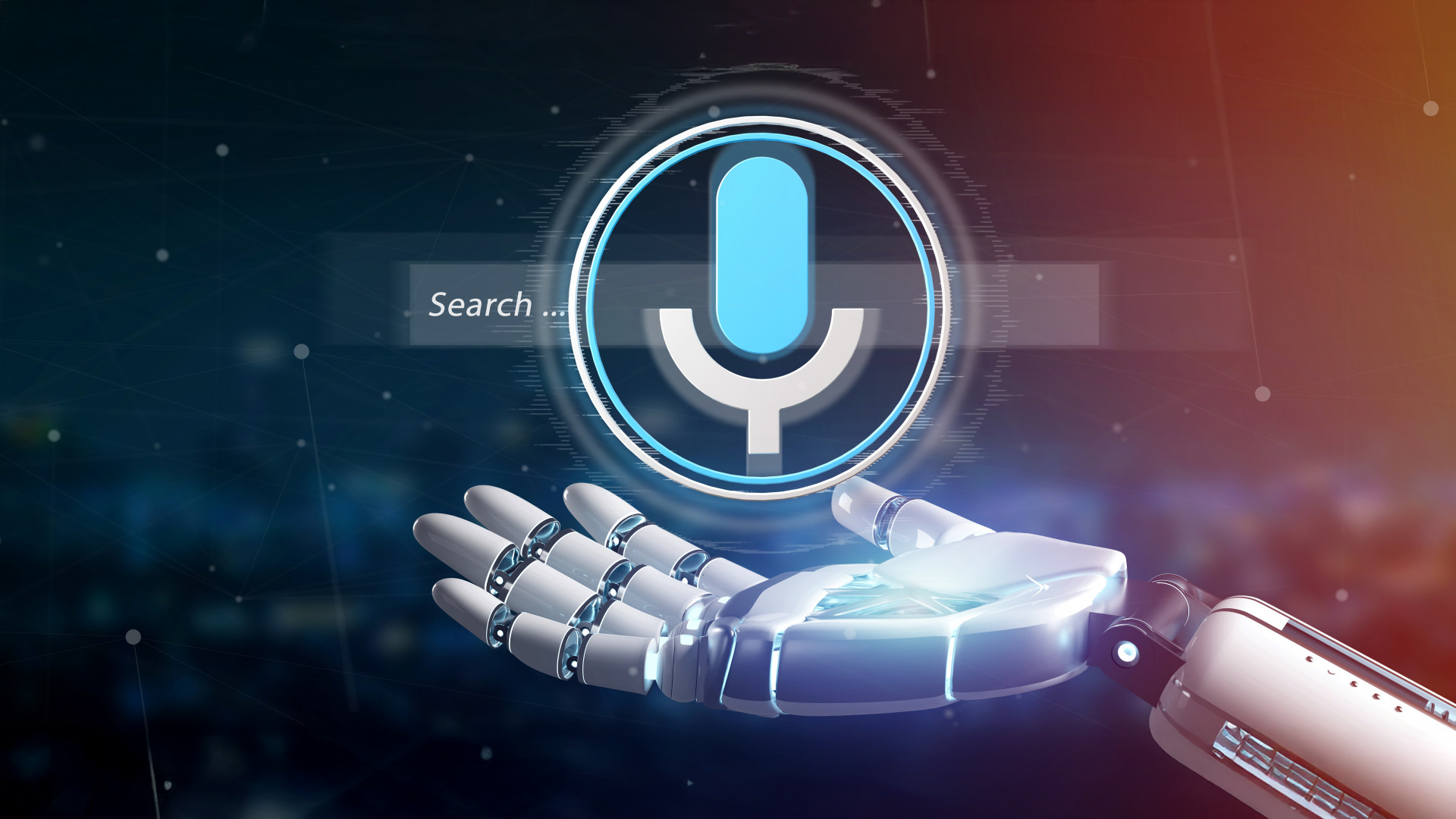For companies today, marketing strategies are more critical than ever for their success. As consumer habits shift and digital technology advances, the divide between traditional marketing methods, such as print ads, TV commercials, and billboards , and modern, data-driven digital marketing services in India is growing wider.

For businesses, digital marketing solutions are emerging as an essential tool, offering precision, scalability, and adaptability that traditional methods may struggle to match.
More and more businesses are opting for digital marketing services, in India recognizing the flexibility and measurable results that online platforms offer.By choosing the right digital marketing services in India, businesses can tap into the potential of the digital space, allowing them to reach their goals effectively and maximize returns on investment (ROI).
This article by Markiverse, explores the key differences between digital and traditional marketing, highlighting why the former has become the preferred choice for modern businesses.
Difference between Traditional and Digital Marketing
Understanding the difference between traditional marketing and digital marketing is essential for businesses deciding where to invest their resources.
What is traditional marketing?
Traditional marketing relies on offline channels like newspapers, television, radio and billboards to promote products or services. While these methods can be effective for reaching local audiences and building brand recall, they often involve higher costs and limited targeting capabilities.
What is digital marketing?
Digital marketing leverages online platforms such as social media, search engines, email, and websites to connect with a global audience. One key difference between traditional marketing and digital marketing is measurability, as digital campaigns provide real-time data and performance metrics, allowing businesses to track ROI and optimize strategies instantly. This makes digital marketing a more flexible, cost-effective, and scalable option for modern brands.
Examples of Traditional and Digital Marketing
Understanding the difference between traditional marketing and digital marketing becomes clearer when we look at real-world examples. While both aim to promote products or services, they do so through very different channels and techniques.
1. Traditional Marketing
Traditional marketing includes offline promotional methods that have been in use for decades. Common examples include:
- Print advertisements in newspapers, magazines, and brochures
- TV and radio commercials broadcast to mass audiences
- Billboards and hoardings placed in high-traffic areas
- Flyers and direct mailers distributed locally
- Telemarketing via cold calls or SMS campaigns
These methods are effective for building brand awareness but often lack targeting precision and real-time performance tracking.
2. Digital Marketing
Digital marketing uses internet-based platforms to reach and engage with audiences. Examples include:
- Digital campaigns using display ads, banner ads, and sponsored content across websites and apps
- Social media marketing on platforms like Facebook, Instagram, LinkedIn, and X (formerly Twitter)
- Email marketing with personalized newsletters, promotions, and drip campaigns
- Search engine marketing (SEM) like Google Ads for keyword-targeted visibility
- Influencer marketing via content collaborations with online personalities
These channels offer measurable, scalable, and highly targeted outreach, making them essential for modern marketing strategies.
Advantages and Disadvantages of Traditional Marketing
Advantages
- High visibility in local areas: Billboards, print ads, and TV commercials can create strong brand recall.
- Tangible presence: Physical materials like brochures and flyers are more memorable for some users.
- Trust factor: Traditional media still holds credibility, especially among older audiences.
- Wider offline audience: Reaches demographics not active online or in digital ecosystems.
- Simplicity: Campaign execution is often straightforward and doesn’t require technical expertise
Disadvantages
- Limited targeting: Messages are broadcast to broad audiences with little control over who sees them.
- High costs: TV, radio, and print ads can be expensive with limited ROI tracking.
- No real-time analytics: Difficult to measure performance accurately or adjust campaigns on the fly.
- Time-consuming: Planning and launching traditional campaigns usually take longer.
- Lower engagement: It’s mostly one-way communication, with limited scope for interaction.
Advantages and Disadvantages of Digital Marketing
Advantages
- Global reach: Digital marketing allows businesses to connect with audiences across the world through online platforms.
- Targeted campaigns: Ads can be precisely tailored based on demographics, interests, and behaviors.
- Real-time tracking: Campaign performance can be monitored instantly, helping optimize results on the go.
- Cost-effective: Budget-friendly for startups and scalable for larger businesses.
- Interactive engagement: Encourages two-way communication through social media, emails, and content.
- Personalization: Campaigns can be customized at scale for individual users.
Disadvantages
- Digital fatigue: Users may ignore ads due to content overload.
- Privacy concerns: Data usage and tracking can raise regulatory and ethical questions.
- Dependence on technology: Issues like poor internet connectivity can impact campaign visibility.
- High competition: The online space is saturated, requiring strong differentiation and continuous optimization.
- Frequent updates: Platforms and algorithms change often, demanding ongoing learning and adaptation.
Traditional Marketing Vs Digital Marketing: Evaluating Key Parameters
1. Reach: Local vs Global
Traditional Marketing:
Traditional marketing channels such as newspapers, TV ads, and radio, typically target local or regional audiences. While these methods can be effective for reaching people within a specific geographic area, they often lack the ability to scale. Billboards, for instance, are seen by those who happen to be in a certain location, making it difficult to reach a broader or more targeted audience.
Digital Marketing:
Digital marketing opens the door to a global audience. Through websites, search engines, and social media, businesses can engage with potential customers far beyond their local market. Digital channels like Google Ads and Facebook allow precise audience targeting based on demographics, interests, and online behavior, making it easier to reach the right people, no matter where they are. This expansive reach is one of the primary reasons businesses are increasingly turning to the best digital marketing company in India to manage campaigns that deliver results beyond geographical limitations.This is why many companies choose to work with digital marketing agencies in India who specialize in precision targeting to optimize campaigns for maximum effectiveness.

Markiverse offers comprehensive digital marketing services that focus on boosting your ROI. Learn more about our digital marketing services here.
2. Targeting Precision: Broad vs Highly Specific
Traditional Marketing:
In traditional marketing, targeting is generally broad and often less specific. For instance, a TV commercial will air to anyone watching a particular channel, regardless of their interests or buying intent. Similarly, print ads in magazines or newspapers are seen by a wide audience, but there’s no way to ensure that the message is reaching the right people who are most likely to engage with the brand.
Digital Marketing:
Digital marketing, by contrast, allows for laser-focused targeting. Tools like Google Ads and Facebook’s ad platform enable businesses to segment their audience based on specific criteria such as age, gender, location, income level, interests, and even past online behaviors. This precision ensures that marketing budgets are spent more efficiently, reaching the right consumers at the right time. Top digital marketing companies in India specialize in using data analytics and audience segmentation to optimize campaigns for maximum effectiveness, ensuring that your advertising dollars drive measurable results.
3. Cost Efficiency and Flexibility: High Investment vs Scalable Spending
Traditional Marketing:
Traditional marketing can be expensive and requires significant upfront costs. TV commercials, billboards, and print advertisements often come with high price tags, and there’s little room for flexibility once a campaign is launched. For many small and medium-sized businesses, these costs can be prohibitive, making traditional marketing a risky investment without a guaranteed return.
Digital Marketing:
Digital marketing is far more cost-effective, particularly for businesses that need to be mindful of their budget. Platforms like Google, Instagram, and Facebook allow for flexible spending, meaning businesses can start small and scale their efforts as they see results. The cost of digital marketing in India can vary based on goals, but its scalability ensures value for every rupee spent. The cost for digital marketing in India can be tailored to suit any budget, with the added advantage that you only pay for the actions you choose—such as clicks, impressions, or conversions—ensuring that your investment goes further. Additionally, digital campaigns can be adjusted in real-time, allowing for rapid changes based on performance.
4. Measurability and Performance Tracking: Guesswork vs Data-led
Traditional Marketing:
One of the main challenges with traditional marketing is the difficulty in tracking performance. It’s tough to measure how many people actually viewed a billboard, read a newspaper ad, or acted after seeing a TV commercial. This lack of visibility into the campaign’s performance often leads to guesswork, with no precise way to calculate ROI.
Digital Marketing:
The transparency of digital marketing makes it a powerful tool for businesses that want to track results in real-time. Analytics platforms such as Google Analytics, Facebook Insights, and other tools allow businesses to monitor key performance indicators (KPIs), such as website traffic, click-through rates, conversions, and sales. This real-time feedback enables businesses to fine-tune their campaigns and allocate budgets where they are most effective. Digital marketing services in India often come bundled with advanced analytics support to ensure campaigns remain data-driven. The best digital marketing companies in India use these insights to continually optimize campaigns for higher ROI, allowing businesses to make data-driven decisions rather than relying on guesswork.
5. Consumer Engagement: Passive vs Interactive
Traditional Marketing:
Traditional marketing tends to be a one-way communication model. Brands push their message to the audience through commercials, print ads, or radio spots, but there’s limited opportunity for interaction. Consumers receive the message passively, and businesses often have to wait for sales or market research to gauge their impact.
Digital Marketing:
Digital marketing, on the other hand, is inherently interactive. Social media platforms, email marketing, and content marketing allow businesses to engage directly with their audience. Consumers can leave comments, ask questions, share content, and even provide feedback in real-time. This two-way interaction fosters stronger relationships between brands and customers, leading to better customer satisfaction and loyalty. By engaging with consumers where they spend much of their time (online) businesses can build more meaningful connections and respond quickly to their needs and preferences.
This is a major reason digital marketing in India is now the go-to choice for building lasting customer relationships.
6. Speed of Results: Delayed vs Immediate Feedback
Traditional Marketing:
Traditional marketing campaigns often take time to produce results. For example, a magazine ad or a billboard may take weeks or even months to generate measurable effects, and it can be difficult to determine exactly when consumers begin responding to the campaign.
Digital Marketing:
With digital marketing, businesses can start seeing results almost immediately. Paid advertising campaigns on Google or Facebook, for example, can drive traffic to your website within hours of launch. Marketers can monitor how campaigns perform in real time, allowing them to make necessary adjustments to improve results. This speed is invaluable for businesses looking to quickly generate leads or boost sales, and it’s one of the reasons why the price of digital marketing in India offers such good value for businesses of all sizes.
7. Personalization: Generic Messages vs Tailored Experiences
Traditional Marketing:
Traditional marketing methods generally deliver the same message to a wide audience, with little to no personalization. A TV ad, for instance, broadcasts the same message to all viewers, regardless of their individual preferences, behaviors, or needs.
Digital Marketing:
Digital marketing excels at personalization. With access to vast amounts of consumer data, businesses can create highly targeted campaigns that deliver personalized messages based on a user’s past behavior, interests, and demographics. Email marketing campaigns, for instance, can be tailored to individual recipients, offering personalized product recommendations, discounts, and content. This level of personalization increases engagement and conversion rates, making digital marketing a more efficient and customer-centric approach.
8. Adaptability: Fixed Campaigns vs Real-Time Adjustments
Traditional Marketing:
Once a traditional marketing campaign is live, there is little room for adjustment. Changing a billboard design or re-shooting a TV commercial can be costly and time-consuming, which makes it difficult for businesses to respond to changing market conditions or customer feedback.
Digital Marketing:
Digital marketing campaigns can be adjusted instantly based on real-time performance data. If an ad isn’t delivering the expected results, businesses can tweak the messaging, adjust targeting, or shift budgets within hours. This flexibility allows companies to stay agile, responding quickly to new opportunities or challenges. Partnering with the best marketing companies in India ensures that your digital campaigns remain dynamic, flexible, and optimized for success.
In conclusion, whether you’re a small startup or a large corporation, adopting digital marketing strategies can help you scale your efforts, maximize ROI, and stay ahead of the competition.If you haven’t leveraged digital marketing yet or are looking to enhance your strategies, connect with our expert team at Markiverse and let’s get your business to new heights. Contact us here.
.svg)





